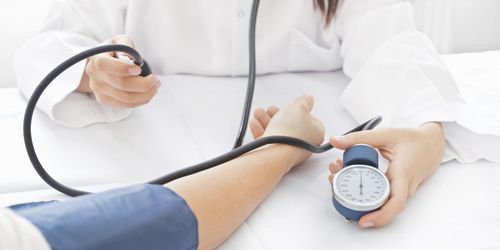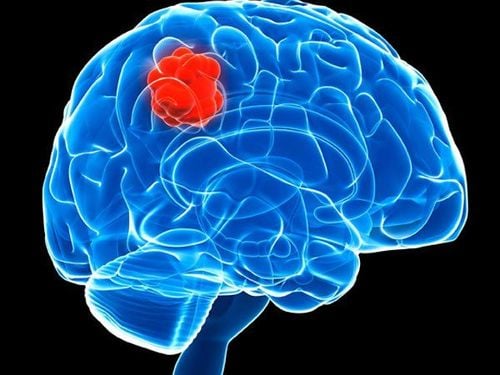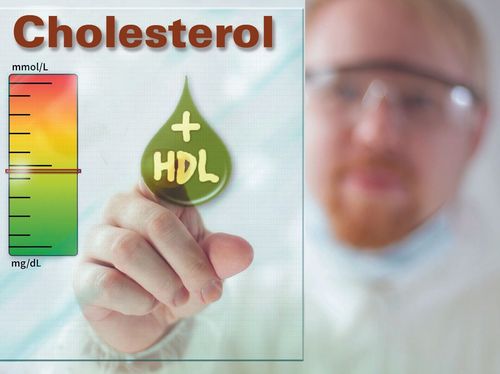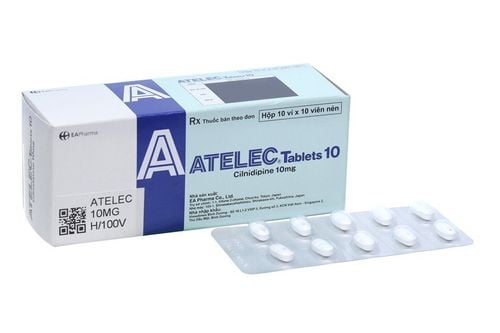This is an automatically translated article.
The article was professionally consulted by Dr. Tran Quoc Tuan - Emergency Medicine Doctor - Emergency Resuscitation Department - Vinmec Phu Quoc International General Hospital. Doctor Tran Quoc Tuan has more than 12 years of experience in emergency resuscitation.Coronary intervention is one of the important solutions in the treatment of acute myocardial infarction. How to make the patient recover quickly, care is extremely important. In the article below, we will bring you useful knowledge about how to care for patients during coronary intervention.
1. Guidelines for patient care before coronary intervention
The patient's recovery rate depends on all aspects of care before, during and after coronary intervention.On the side of the medical team Before intervention, doctors and medical staff need to prepare medical records, basic tests: diagnostic tests for cardiovascular disease, routine tests, tests for hemostasis, tests for infectious diseases. This is followed by preparation and cleaning of the puncture site by: locating the puncture site: checking for a clear pulse, associated abnormalities, history of embolism or prior intervention, in some cases. In the case of having to clean the hairs at the puncture site.
On the side of the patient and the patient's family The patient's family needs to mobilize and prepare a good mind for the patient before proceeding with treatment.
2. Guidelines for patient care after coronary intervention

Bác sĩ phải ghi rõ thông tin về kết quả thủ thuật
The patient's intervention room nurse must hand over to the patient care nurse the patient's condition, sheath withdrawal time, additional medications and coronary intervention results.
When returning to the ward, it is necessary to closely monitor the patient with Monitor for at least 6 hours: patient's state of consciousness, vital parameters: pulse, blood pressure, spO2, chest pain and shortness of breath, patient's condition. The state of the puncture area, the quantity and color of urine, repeat the electrocardiogram, blood biochemical tests: urea, creatinine, electrolytes, CK, CKMB, Troponin,... blood count, some cases Suspected complications: echocardiography, chest CT scan.
The nurse will moisten first to remove the bandage for the wound, then rinse it with physiological saline or an antiseptic solution, can be covered with a bandage or for ventilation.
On the patient's side and family members Wash the wound at least once a day with saline or antiseptic solution. Use your hands or a soft washcloth gently, do not rub vigorously on the wound. Try to keep the wound dry, except when bathing. Do not apply cream, ointment or anything to the wound. Wear loose clothing. Do not soak in the bath, go swimming for a week after the procedure. Quit smoking, including passive smoking. After coronary stenting, coronary intervention patients should rest completely for 1 week, then begin moderate exercise. The simplest way to exercise is walking, patients should walk 30-60 minutes a day and 5 times a week. In addition, the patient can also play golf or badminton but should not play strong sports such as tennis. To help your loved one maintain a regular exercise routine, you can schedule time to exercise together each day. This is also a secret to help control blood pressure, weight and cholesterol levels, keep a relaxed state, avoid pressure and stress.
3. Nutrition after coronary intervention
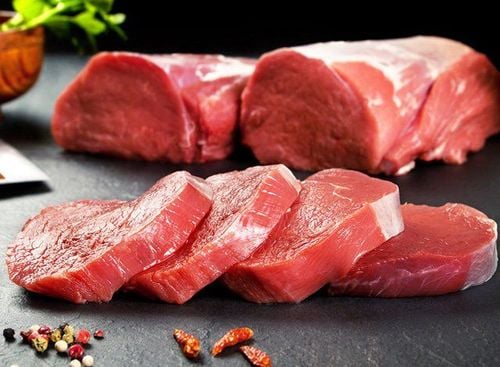
Người bệnh nên hạn chế ăn thịt đỏ tránh làm tăng cholesterol và làm tình trạng xơ vữa mạch vành năng hơn
Protein: Eat a moderate amount of lean meat, skinless chicken, eggs, beans extra; Eat two meals a week of fish like salmon, mackerel or sardines to provide your body with heart-healthy omega-3 fats. In addition, it is necessary to avoid red meat such as beef, dog meat... to avoid increasing cholesterol and aggravating coronary atherosclerosis. Fat: Use easily digestible fats (unsaturated fats) such as vegetable oils (olive oil, sunflower oil, canola oil...) or from nuts, avocados, fish oils; minimize animal fat, fast food, animal skin. Fiber: Add to the menu a lot of fresh fruits and vegetables. Filtered water: Drink plenty of water (except for patients with severe heart failure) and limit stimulants and sugary drinks. It is recommended to drink 8-10 glasses of water per day to increase the excretion of contrast material used during the intervention. In addition to water, patients should also drink low-fat milk, yogurt, unsweetened milk or preferably soy milk. It should be noted that cooking is light, reducing salt and fish sauce when processing, should eat lighter than normal people to avoid hypertension and reduce edema. Above is the information shared on how to care for coronary interventionists when having a heart attack, hopefully bringing useful knowledge to you.
Please dial HOTLINE for more information or register for an appointment HERE. Download MyVinmec app to make appointments faster and to manage your bookings easily.




